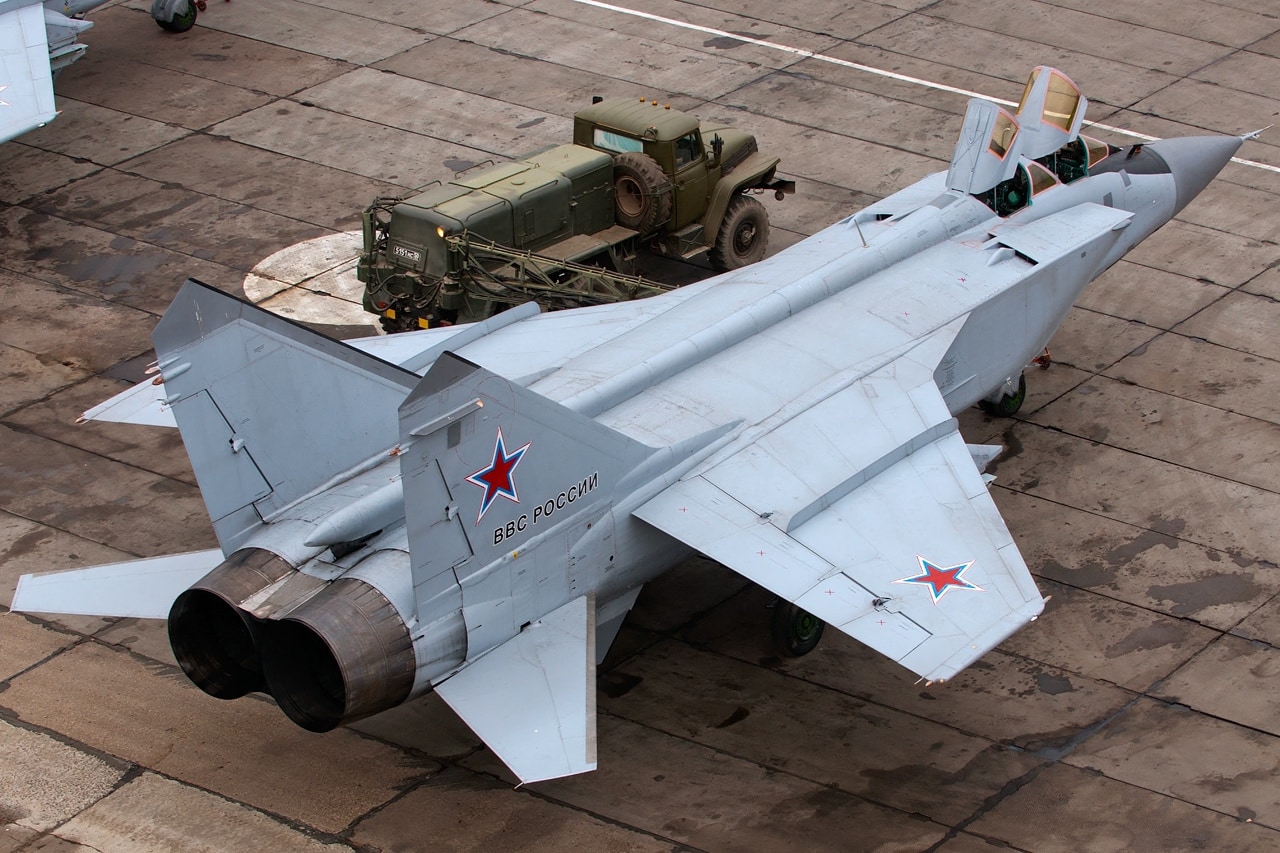In recent months Russia has made it abundantly clear that it sees the Arctic as its own and has built up its military presence in the mineral-rich region. This has included an expansion to the Nagurskoye airbase, which is located on the Franz Josef Land archipelago about 600 miles south of the geographic North Pole.
The base, which was first built in the 1950s as a weather station and communications outpost between the Eurasian mainland the North Pole, features a ‘shamrock-shaped facility’ that consists of three large pods extending from a central atrium called the Arctic Trefoil. It is painted in the white-red-blue colors of the Russian national flag. It is likely far from an ideal posting as temperatures regularly plunge to minus 42 Celsius in the winter, and snow only disappears from August to mid-September.
Russian military units have been training to fight in the extreme cold, while the Russian Air Force has conducted training operations of its MiG-31 long-range jet fighters – truly testing the limits of the “all-weather” aircraft – over the North Pole this year.
Clearly, Russia is sending a message, but in case the world didn’t get the message. Russian Security Council Deputy Chairman Dmitry Medvedev warned on Tuesday that increased foreign military presence near Russian borders in the Arctic could lead to an escalation in the region. Moreover, Russia is prepared to respond to attempts to destabilize the situation in the Arctic by reinforcing its armed forces group
“We register increasing military presence near our borders, aimed at constraining our country,” Medvedev said during a meeting on Russian national interests in the Arctic according to a report from Tass.
“Such policy is totally unacceptable, because it directly threatens the national security, and can lead to an escalation in the region in general,” warned Medvedev, who added that Russia would continue the work it has been doing – including both on reinforcing the Russian forces group in the Arctic, and on equipping that group with modern weapons.
“In any case, this will be an efficient response to foreign countries’ attempts to destabilize the situation in the Arctic and create conditions for anti-Russia provocations,” Medvedev explained. “In the last few years, our country significantly expanded its presence in the Arctic: we carry out major economic projects, we create modern infrastructure, we build place for people to live in comfort.”
The goal of Russia’s expansion into the Arctic was outlined by President Vladimir Putin, which Medvedev reaffirmed was “to preserve the Arctic as a territory of peace, of stable and mutually beneficial partnership. Many Arctic and non-Arctic states support this position, and express their interest in the development of a peaceful cooperation in the region.”
The question is how the other nations of the Arctic Council – those that have sovereignty over the lands within the Arctic Circle and also include Canada, Denmark, Finland, Iceland, Norway, Sweden and the United States – will respond to Russia’s claims. Already, U.S. and NATO aircraft and vessels have increased their presence in the Barents Sea.
However, Russia’s Northern Fleet has certainly operated as if the neutral waters are its alone and a misstep could certainly result in a very real war fought in one of the coldest regions on the planet.
Peter Suciu is a Michigan-based writer who has contributed to more than four dozen magazines, newspapers and websites. He regularly writes about military small arms, and is the author of several books on military headgear including A Gallery of Military Headdress, which is available on Amazon.com.

